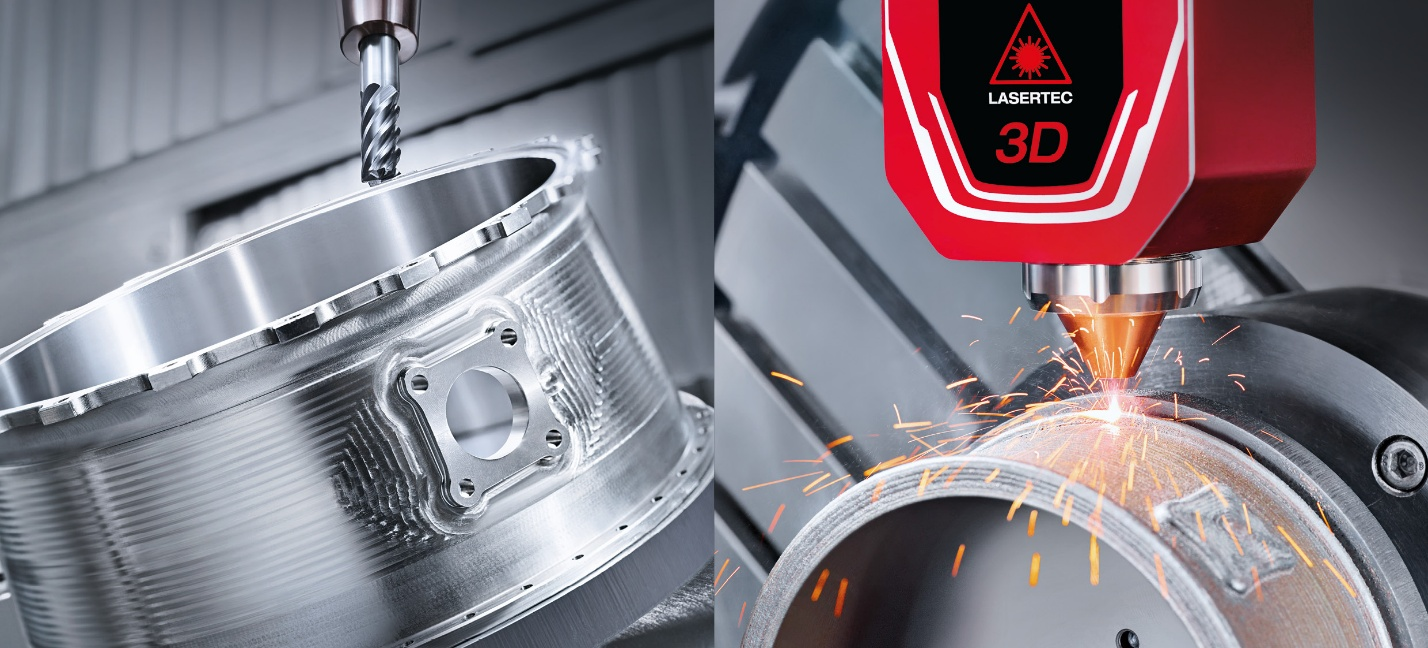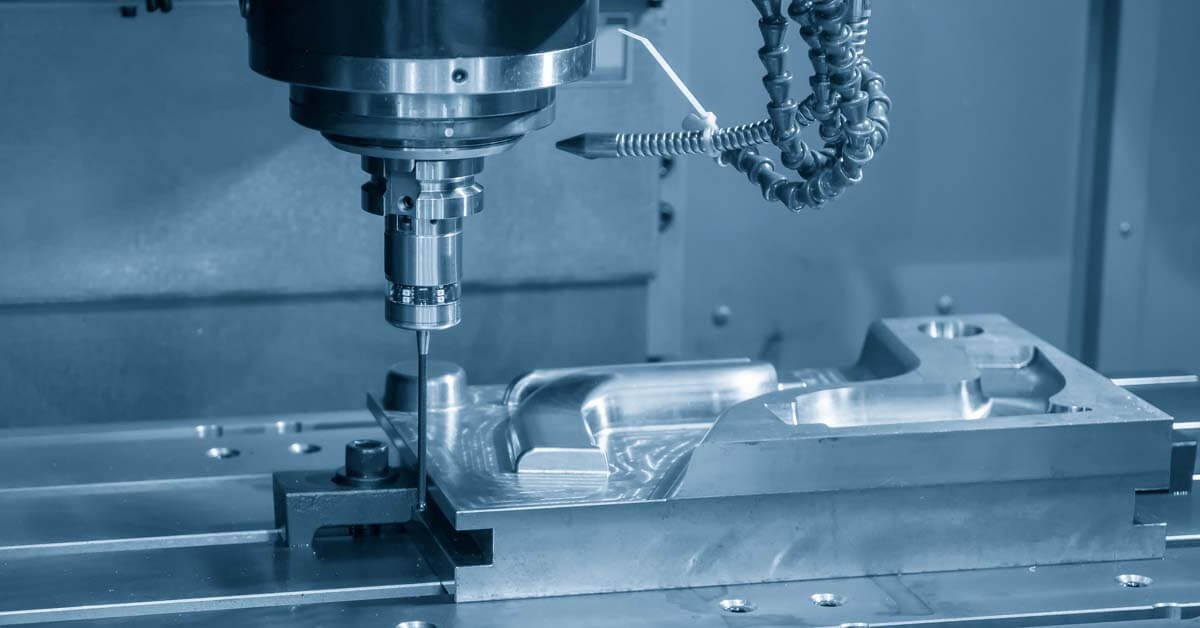How can Vacuum chambers endure the severe industry demands without finishing? Post-processing is a vital but frequently disregarded stage that comes into play here. Whereas Vacuum chambers are the overlooked heroes in innovative technology and invention. They provide the ideal setting for novel discoveries and accurate manufacturing. Vacuum chambers play a crucial role in many fields, including the complex field of semiconductor manufacture, which creates microchips, the exciting field of scientific research that pushes the frontiers of human knowledge, and the demanding aerospace testing industry.
However, what happens when these vacuum chambers are constructed? How can they become robust, high-functioning systems for industries from being simple structures?
These chambers undergo procedures including heat treatment, polishing, and sandblasting, which not only increase their durability but also optimize their performance. But what happens if we don't follow these steps? Is the entire operation at risk if this step is skipped? Certainly. Do you think Post-processing is a game-changer, not just a fluke? Let’s explore some more hidden details about this topic in this blog.
I. Cleaning Processes
Cleaning and Degreasing
1. Importance of Cleaning
Outgassing can occur from any leftover oils, greases, or particle debris on the chamber surfaces, which degrades the vacuum quality. Therefore, Vacuum chamber cleaning is essential in getting them ready for use. It makes sure that there are no impurities within that could affect how well sensitive operations operate. Sustaining the integrity of the vacuum through appropriate cleaning and degreasing ensures consistent and dependable outcomes in a variety of applications, from aircraft testing to semiconductor fabrication.
2. Types of Cleaning Processes
● Ultrasonic Cleaning:
This technique creates cavitation bubbles in a cleaning solution using high-frequency sound waves, which successfully removes and moves impurities from the surfaces of the chamber. When it comes to eliminating small particles and residues from intricate designs and difficult-to-reach regions inside the vacuum chamber, ultrasonic cleaning is especially useful.
● Solvent Cleaning:
To dissolve and get rid of oils, greases, and other organic pollutants, chemical solvents are used in solvent cleaning. It is frequently used to ensure that the surfaces are free of severe contamination as a first cleaning step before more extensive cleaning techniques.
● Plasma Cleaning:
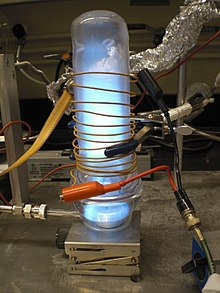
MEMS surface is cleaned using plasma
This method of organic contamination removal works at the molecular level by using ionized gas (plasma). When it comes to applications that demand the highest levels of vacuum purity, like the semiconductor and scientific research industries, this technique is quite effective at producing ultra-clean surfaces.
3. Steps of Procedure
Usually, there are multiple steps involved in the cleaning procedure to guarantee complete decontamination:
- First Inspection: The chamber is examined to look for any obvious pollutants.
- Pre-Cleaning: Air jets or mechanical brushes are used to remove loose particles and surface pollutants.
- Primary Cleaning: To get rid of more tenacious impurities, the chamber is cleaned using solvent or ultrasonic technology.
- Secondary Cleaning: Plasma cleaning is frequently used as a last resort to ensure that all remaining organic elements are removed.
- Drying: The chamber is completely dried to eliminate any possibility of residual moisture influencing vacuum performance.
- Final examination: To make sure the chamber is clear of impurities and prepared for usage, a final examination is carried out.
Utilisation in Vacuum Chambers
For a variety of vacuum chamber applications, cleaning procedures are crucial. For instance, in the semiconductor manufacturing process, minute impurities can result in microchip flaws, necessitating the need for extremely clean surfaces. Contaminants can tamper with delicate simulations and measurements in aeronautical testing. For studies to be accurate and repeatable in scientific research, a clean cleanroom environment is essential. Every application requires a different cleaning strategy to make sure the vacuum chamber can fulfill the demands of the particular job.
II.Surface Coating and Plating
1. Purpose of Surface Coating
Surface coating and plating are essential procedures to improve the performance and longevity of vacuum chambers. Protecting the chamber from corrosion, lowering outgassing, enhancing wear resistance, and guaranteeing compatibility with the materials used in vacuum operations are the main goals of surface coating. The surface characteristics of vacuum chambers can be modified to match the severe requirements of different industrial applications by applying specialty coatings, which increases the chambers' dependability and operational life.

2. Types of Coatings
1. Physical Vapour Deposition (PVD):
In PVD, a material is physically vaporized and then condenses onto the vacuum chamber's surface to create a thin, even layer. Hard, wear-resistant coatings, like titanium nitride, are frequently applied using this technique to increase surface durability and lower friction.
2. Chemical Vapour Deposition (CVD):
In CVD, a solid substance is deposited on the chamber surface as a result of a chemical interaction between gaseous precursors. Coatings that improve the thermal stability and chemical resistance of the chamber, such as silicon carbide or diamond-like carbon, are frequently applied using this method.
3. Thermal Spray:
To produce a thick, protective layer, molten or semi-molten materials are projected onto the vacuum chamber's surface. This method works well for providing corrosion and wear resistance, particularly in cases where the chamber is subjected to hostile conditions.
4. Electroplating:
This technique involves applying an electric current to the vacuum chamber's surface to deposit a layer of metal, such as nickel or chromium. Improved electrical conductivity, increased corrosion resistance, or a reflective surface for certain uses are all common goals of this technique.
5. Anodizing:
Anodizing is an electrochemical technique that thickens the naturally occurring oxide coating on metal surfaces, most often aluminum. This procedure improves corrosion resistance and permits the addition of colors for decorative effects. Additionally, anodized surfaces have superior insulating qualities, which makes them appropriate for use in particular vacuum chamber applications.
3. Applications in Vacuum Chambers
In vacuum chamber applications where improved performance is required, surface coating and plating are essential. For example, PVD and CVD coating, are utilized in semiconductor manufacturing to create ultra-thin, very accurate layers that are necessary for microchip production. The selection of each coating type is contingent upon the application's particular requirements, guaranteeing the vacuum chamber's ability to function at peak efficiency within its designated setting.
III. Heat Treatment
In the production and setup of vacuum chambers, heat treatment is an essential procedure that modifies the material's physical and occasionally chemical characteristics. Enhancing the mechanical characteristics of the chamber material, such as its strength, hardness, and ductility, is the main goal of heat treatment. Furthermore, heat treatment can lessen outgassing, enhance thermal stability, and relieve internal strains brought on by manufacturing—all of which are essential for upholding the high-performance standards needed in vacuum conditions.
- 1. Types of Heat Treatment:
Annealing:
Annealing is the process of heating the chamber material to a predetermined temperature, maintaining it there, and then allowing it to cool gradually. This procedure relieves internal tensions that can cause the material to crack or warp while also softening it and making it more ductile and workable.
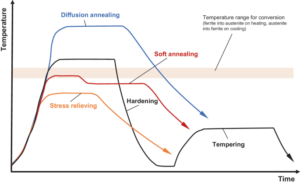
Stress Relieving:
Lower-temperature heat treatment known as "stress relieving" is used to lessen residual tensions in a material without appreciably changing its mechanical characteristics. This procedure is necessary to keep vacuum chambers' dimensions stable, particularly after welding or machining procedures.
Vacuum Baking:
The process of vacuum baking entails heating the chamber while it is under vacuum to eliminate volatile pollutants and minimize outgassing. For applications like semiconductor production or space simulation chambers, where maintaining a high-quality vacuum is crucial, this procedure is very important.
Tempering:
To lessen the material's brittleness, tempering is a heat treatment procedure that is usually carried out after hardening. To increase toughness without sacrificing sufficient hardness, the material is heated to a temperature below its critical point and then allowed to cool.
- 2. Temperature and Time Parameters:
The material of the vacuum chamber and the intended results determine the precise temperature and duration of the heat treatment. For instance, depending on the material, annealing may range for temperatures between 600°C and 900°C together with a holding period to provide a uniform distribution of heat.
- 3. Cooling Methods:
Controlled Cooling:
This technique lets the material cool down gradually at a set pace and is frequently used in annealing and tempering procedures. By minimizing thermal shock and decreasing the possibility of warping or breaking, this technique guarantees that the material will maintain its intended characteristics.
Air Cooling:
This simpler technique involves letting the material cool on its own by leaving it outside. This approach is adequate in situations when a quick cooling rate is not essential to the operation and is frequently utilized in stress-relieving procedures.
Quenching:
Quenching is the process of quickly cooling a substance, usually by submerging it in a liquid, such as oil or water. When a material needs to be extremely strong and hard, this technique is employed like in the case of some steel components used in vacuum chambers. But quenching can also cause stress, so more treatments to relieve that tension might be necessary.
IV. Polishing
To prepare vacuum chambers, polishing is a crucial post-processing operation that is mainly concerned with creating a flawless, smooth surface. The following are the main goals of polishing:

- Surface Smoothness:
Polishing greatly lowers surface roughness, leaving behind a mirror-like polish that reduces the chance of outgassing and particle adherence. This is essential to preserving the vacuum's environment's purity.
- Elimination of Micro-Imperfections:
During the polishing process, little flaws that may have been introduced during manufacture, such as burrs, pits, and scratches, are removed. It is essential to remove these micro-imperfections since they can be potential failure locations and sources of contamination.
- Enhanced Vacuum Performance:
A smooth surface lowers the possibility of contamination and outgassing, which enhances vacuum performance. This is crucial in applications involving high vacuum or ultra-high vacuum (UHV) since even small surface flaws might affect the chamber's ability to function.
- B. Types of Polishing
- Mechanical polishing:
This method uses abrasives, including sandpaper or polishing compounds, that are manually or with a rotating instrument applied. Mechanical polishing works well for greater surface flaws and a basic level of smoothness.
- Electro-polishing:
By selectively dissolving high spots on the metal surface, the chamber surface is polished through an electrochemical process. This technique helps to minimize the surface area available for outgassing and is especially good at producing a very clean and smooth finish.
- Physical Polishing:
This category includes methods like buffing, which involves using a polishing product and a pad or cloth. After completing various polishing procedures, this technique is frequently applied as the last step to get a high-gloss finish.
- Chemical Polishing:
This technique involves submerging the chamber in a solution that evenly dissolves surface material, eliminating small flaws and creating a glossy, smooth surface. For intricate geometries where mechanical polishing would be challenging, this technique works well.
- C. Impact on Chamber Performance
Polishing significantly affects how well vacuum chambers work. A polished surface minimizes outgassing to a large extent, which is necessary to reach and sustain high vacuum levels. Eliminating micro-imperfections also reduces the possibility of contamination and improves the chamber's general cleanliness.
This makes procedures more efficient and repeatable in all fields, including aerospace applications, scientific research, and semiconductor manufacturing. Moreover, a polished surface lessens the possibility of particle adherence, which might result in flaws in delicate procedures or studies.
V. Sandblasting/Shot Peening
The surface treatment techniques of shot peening and sandblasting are used to clean, polish, and/or harden vacuum chamber surfaces. While abrasive materials are propelled against the chamber surface at a high speed in both processes, their functions are slightly different:
Sandblasting:
Sandblasting is mostly used to clean and prepare surfaces by removing impurities such as paint, scale, and rust. Moreover, it can be utilized to produce a consistent surface texture, which is necessary for later coatings or treatments.
Types of Sandblasting:
Wet Sandblasting: This technique uses water and abrasive media to minimize heat and dust produced during the process. This technique reduces the possibility of warping or distortion.
Dry sandblasting: It is perfect for extensive cleaning and surface preparation because it uses more aggressive dry abrasive media.
Shot Peening:
This is a technique used to increase a material's resistance to stress corrosion cracking and fatigue strength. It increases the material's longevity and durability by creating compressive residual stresses on the surface.
Application:
Sandblasting: It is frequently used to prepare vacuum chambers for coating or painting. It is also used to clean chambers that have been in operation, eliminating impurities that may affect the vacuum's effectiveness.
Shot peening: Frequently employed in the automotive and aerospace industries, shot peening prolongs the fatigue life of parts that may experience high stress or cyclic loading in vacuum chambers.
Advantages:
- Cleaning and Preparing the Surface: Sandblasting is an efficient way to get rid of scale, rust, and other surface impurities. This leaves behind a smooth, clean surface that is ready for coating or painting.
- Enhanced Durability: Shot peening lessens the possibility of failure under stress by increasing the fatigue resistance and general durability of vacuum chamber components.
- Enhanced Adhesion: Sandblasting produces a roughened surface that improves surface area and enhances the adhesion of paints, coatings, and other surface treatments.
- Consistent Surface Texture: Sandblasting guarantees a uniform surface texture, which is essential for procedures like coating and sealing where surface uniformity influences performance.
Disadvantage:
- Vacuum performance and structural integrity may be compromised by surface contamination, increased roughness, and possible microcracks by shot peening and sandblasting. They also include material loss, significant operating expenses, and environmental issues.
VI. Welding/Brazing.

Photo by Rob Lambert on Unsplash
Fundamental methods such as brazing and welding are employed in the construction and assembly of vacuum chambers, where it is crucial to attach metal components with extreme precision and integrity. These procedures are used to produce strong, long-lasting joints and leak-tight seals that can survive the harsh circumstances frequently found in vacuum applications.
Welding:
To produce a solid, cohesive junction, welding entails melting the base materials and a filler substance. Welding is the process used in the construction of vacuum chambers to link chamber pieces together, guaranteeing that the seams are airtight and strong enough to sustain high-pressure levels.
Brazing:
The technique of brazing involves joining base metals together without melting the base materials by using a filler metal that has a lower melting point than the base metals. When combining incompatible metals or components with intricate geometries, brazing is especially helpful since it minimizes heat distortion and creates strong connections.
Types of Welding:
● TIG:
TIG (Tungsten Inert Gas) Welding: TIG welding is frequently utilized in the construction of vacuum chambers because of its accuracy and capacity to produce neat, high-quality welds. To shield the weld area from oxidation, it makes use of an inert gas shield and a non-consumable tungsten electrode.
● Electron Beam Welding:
The high-precision welding method known as "electron beam welding" melts and joins materials with a concentrated electron beam. Because electron beam welding creates incredibly strong, clean welds with no distortion, it is frequently used in high-vacuum settings.
● Laser Welding:
In laser welding, materials are melted and fused using a focused laser beam. It is frequently employed in the manufacture of vacuum chambers that need complex designs and little areas where heat is influenced since it is perfect for producing tiny, accurate welds.
Types of Brazing:
Vacuum Brazing:
To avoid oxidation and joint contamination, Vacuum brazing is done in a vacuum atmosphere. Especially in high-temperature situations, vacuum brazing is a very effective method for producing neat, robust connections.
Induction Brazing:
Induction brazing heats the joint area using an electromagnetic field, which causes the filler metal to flow and fuse the components. It works well for quick manufacturing and is frequently utilized in vacuum chamber assembly lines.
Application and Benefits:
- In complex vacuum chamber geometries, where accuracy and joint integrity are critical, both brazing and welding are utilized in the assembly process.
- Vacuum Sealing: Assuring that vacuum chambers can sustain high or ultra-high vacuum levels for lengthy periods requires the creation of leak-tight seals using welding.
- Brazing is frequently used to unite components made of various metals that could be difficult or impossible to weld directly because of variations in thermal expansion coefficients or melting points.
Benefits:
- High Strength and Durability: The joints made by brazing and welding are robust, long-lasting, and able to survive the heat cycles and mechanical forces encountered in vacuum applications.
- Leak-Tight Seals: Vacuum chambers have hermetic seals to prevent leaks that might risk the vacuum environment. This is achieved through skilfully performed welding and brazing.
- Minimal Distortion: By minimizing heat-affected zones and vacuum brazing, techniques like electron beam and laser welding lower the chance of distortion while preserving the dimensional precision of the chamber's components.
Disadvantage:
- Following post-processing in a vacuum chamber, welding/brazing can result in thermal distortion, residual stresses, and microstructural alterations that could weaken the structure, impair the material's characteristics, and cause misalignment.
- It also needs careful post-weld cleaning and could cause outgassing problems. Moreover, brazing may cause surface oxidation, and demand precise joint design.
VII Leak Testing
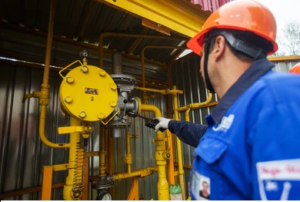
Leak testing's main goal is to find and measure any leaks that could let air or other impurities into the chamber and compromise its functionality and the operations carried out inside. Leak testing is essential in industries like semiconductor production, space simulation, and high-vacuum research where even minute leaks can cause serious problems.
Types of Methods for Leak Testing
- Helium Mass Spectrometry:
The highly sensitive method of helium mass spectrometry uses helium gas to find even the slightest leakage.
- Pressure Decay Monitoring:
A test for larger breaches called pressure decay monitoring tracks changes in pressure over time to find leaks.
- Bubble Testing:
By pressurizing a chamber and submerging it in liquid, bubble testing finds leaks.
- Vacuum Decay Testing:
This method involves examining a vacuumed chamber for pressure rise, which indicates leaks, using vacuum decay testing.
Application and Benefits:
Applications:
Incorporated into scientific research, space simulation, and semiconductor manufacture.
Advantages:
- Maintains vacuum integrity, guards against contamination, boosts dependability, and complies with industry requirements.
Disadvantage:
- The technique can also be time-consuming and expensive. Specialized tools and regulated environments are also necessary. Some methods, such as helium leak testing, can also be costly and need a controlled environment.
VIII Quality Assurance and Final Inspection
Methods of Inspection
- Visual Inspection: Examines the product for obvious flaws such as cracks, consistent surface finish, and weld quality.
- Surface Roughness: Verify that the surface is smooth enough to provide the best hoover performance.
- Testing for Contamination: Find any lingering impurities that can damage the vacuum environment.
Qualification Standards
- Standard Compliance: The vacuum chamber has to adhere to all industry guidelines and customer specifications regarding surface integrity, cleanliness, and surface quality.
- Functionality: For the chamber to be deemed fit for use, it must pass every functional test, including the leak test.
XI. Future Trends in Post-Processing
- Cleaning Technology Advancements: Vacuum chamber cleaning procedures are becoming more effective and efficient due to new methods like eco-friendly solvents and sophisticated plasma cleaning.
- Automation: Robotics and AI-driven systems are combined to simplify post-processing processes, increase accuracy, and decrease human error—all of which produce more dependable and consistent outcomes.
- Environment-Friendly Practice: To reduce the environmental impact of vacuum chamber post-processing, there is an increasing focus on sustainable techniques, such as the use of biodegradable cleaning chemicals and energy-efficient procedures.
The Final Thought:
Vacuum chamber integrity and performance must be preserved by appropriate post-processing for them to satisfy the exacting requirements of sectors such as semiconductor manufacturing, aerospace, and scientific research. The operations of careful cleaning, surface treatment, and leak testing are essential in prolonging the life and dependability of vacuum chambers, which makes them useful in applications requiring great precision. Do you have a query about this blog let us know by commenting below.







